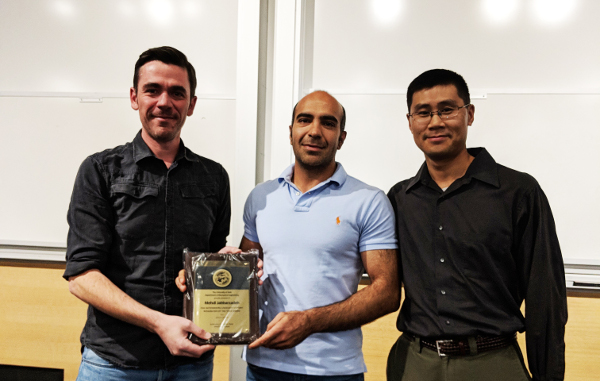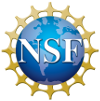Uncategorized
June 23, 2020
Kiarash and collaborators published a paper on soft magnetic microrobots in a special issue of Fluids, “Advances in Biological Flows and Biomimetics.” [K. Samsami, S. A. Mirbagheri, F. Meshkati, H. C. Fu., “Stability of soft magnetic helical microrobots.” Fluids, 5, 19 (2020). pdf ]
June 23, 2020
Xinhui, Marcos, and Henry published a paper on how the physics of bending seta influence the ability of copepods to sense different hydrodynamic signals. [X. Shen, Marcos, H. C. Fu, “How the bending mechanics of setae modulate hydrodynamic sensing in copepods.” Limnology and Oceanography, 65, 749 (2020). pdf]
September 28, 2018
Mehdi and collaborators have published an article on the interesting ways in which Helicobacter suis, which has two tufts of flagella, one at each pole, can swim. The tufts form flagellar bundles which can be either extended from the body or wrapped around the body, leading to combinations of both wrapped, both extended, and one […]
August 27, 2018
Mehdi was awarded Graduate Student Researcher of the Year from the Thermal Fluids and Energy Systems group here at Utah Mechanical Engineering. Congratulations Mehdi! The award recognizes his work during the 2017-2018 academic year, including mentorship of other group members and publications J. Ali, U. K. Cheang, J. D. Martindale, M. Jabbarzadeh, […]
August 9, 2018
As part of a group of investigators, we have received an award to develop mathematical models of the gastric mucus layer and use them to understand bacterial infection in the stomach as well as gastric organoids, spherical reconstructions of gastric tissue that can be used to study gastric function and disease. Besides our group, the […]
August 9, 2018
Mehdi has published a paper investigating how viscous constraints influence the ability of swimmers using different swimming strategies to closely approach other suspended particles, for example to feed, mate, or find new habitats. [M. Jabbarzadeh and H. C. Fu, “Viscous constraints on microorganism approach and interaction,” J. Fluid Mechanics, 851, 715-738 (2018). pdf]
August 9, 2018
We received a second NSF award to study how the physical constraints posed by viscous hydrodynamics influences the form and swimming strategies of microorganisms. This award is in collaboration with Rob Stoll, also in our department at the University of Utah. [CBET-1805847, Viscous Constraints on Zooplankton Approach and Interaction]
August 9, 2018
In collaboration with MinJun Kim at Southern Methodist University, we have received a new NSF award to study how contact interactions between microorganisms and the microstructure of complex media affect swimming. We will combine experiments using artificial bacteria and synthetic mucus with theory and modeling. [CMMI-1760642, Collaborative Research: Controlled Investigation of Micro- and Nanoscale […]
August 9, 2018
Mehdi has published an article describing how the dynamical buckling of bacterial hook and flagella combine to trigger flick motility in monotrichous bacteria. His model is the first to quantitatively predicts the onset of flicks seen in experiments. [M. Jabbarzadeh and H. C. Fu, “Dynamic instability in the hook/flagellum system that triggers bacterial flicks,” Phys. […]
August 9, 2018
JD and Mehdi, in collaboration with Jamel Ali and MinJun Kim’s group at Southern Methodist University, have published a new paper describing artificial bacteria-inspired nanorobots. The nanorobots consist of a magnetic nanobead to which is attached one or two reconstituted bacterial flagella. The swimming speeds of the robots can be altered by triggering polymorphic transformations […]







